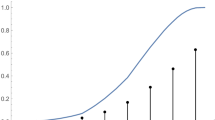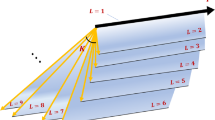Abstract
Motivated by a container storage problem at seaports, this paper examines the infinite-server queueing model with a (second order) stationary but arbitrarily correlated arrival process. It starts with a description of the application context, including an explanation of why non-standard inputs and service times arise in certain container storage problems. As further illustration, formulas characterizing the input and service processes for a particular situation are then presented and justified, together with the simple container accumulation variance formula that follows from the general results derived later. The paper then describes the general results. After reviewing the properties of a general arrival process, and based on minimal assumptions, it presents exact expressions for the variance of the number of customers in the system. (The expression for the mean is already well known.) Expressions are first derived for general independent service times and then for more general service processes that are of importance in port applications.
Similar content being viewed by others
References
D.R. Cox and V. Isham,Point Processes (Chapman Hall, London, 1980).
J. Imakita,A Techo-Economic Analysis of the Port Transport System (Praeger, New York, 1978).
J.O. Jansson and D. Schneerson,Port Economics (MIT Press, Cambridge, 1982).
L. Liu and J.G.C. Templeton, TheGR Xn /G n /∞ system: system size, Queueing Systems 8 (1991) 323–356.
G.F. Newell,Approximate Stochastic Behavior of the n-Server Service Systems with Large n, Lecture Notes in Econ. and Math. Syst. 87 (Springer-Verlag, Berlin, 1973).
United Nations Conference on Trade and Development,Port Development: A Handbook for Planners in Developing Countries (United Nations, New York, 1985).
Author information
Authors and Affiliations
About this article
Cite this article
Daganzo, C.F., Diez-Roux, E. The variance of the number of customers in an infinite-server queueing system with an arbitrarily correlated arrival process. Queueing Syst 19, 289–299 (1995). https://doi.org/10.1007/BF01150414
Received:
Revised:
Issue Date:
DOI: https://doi.org/10.1007/BF01150414




